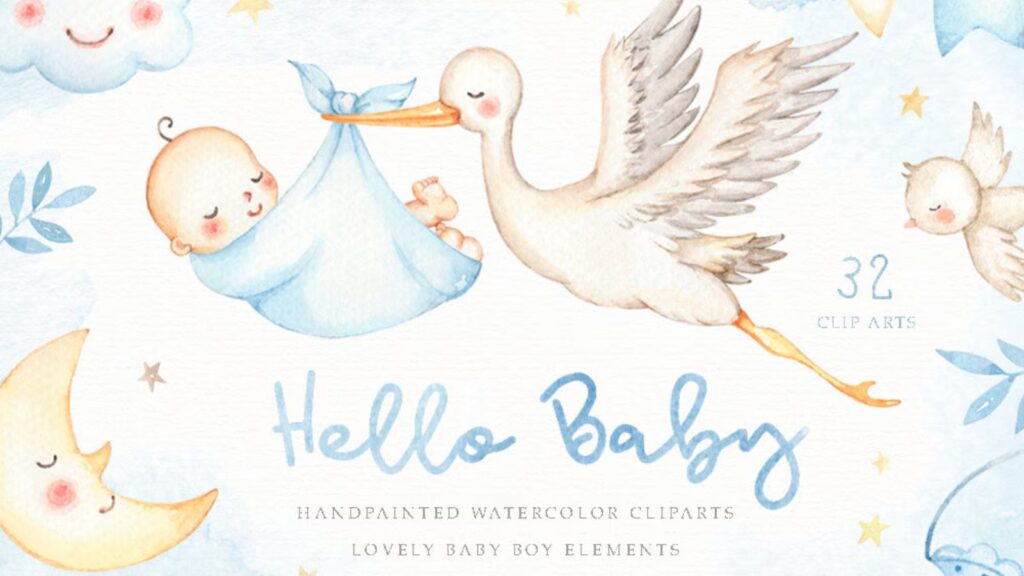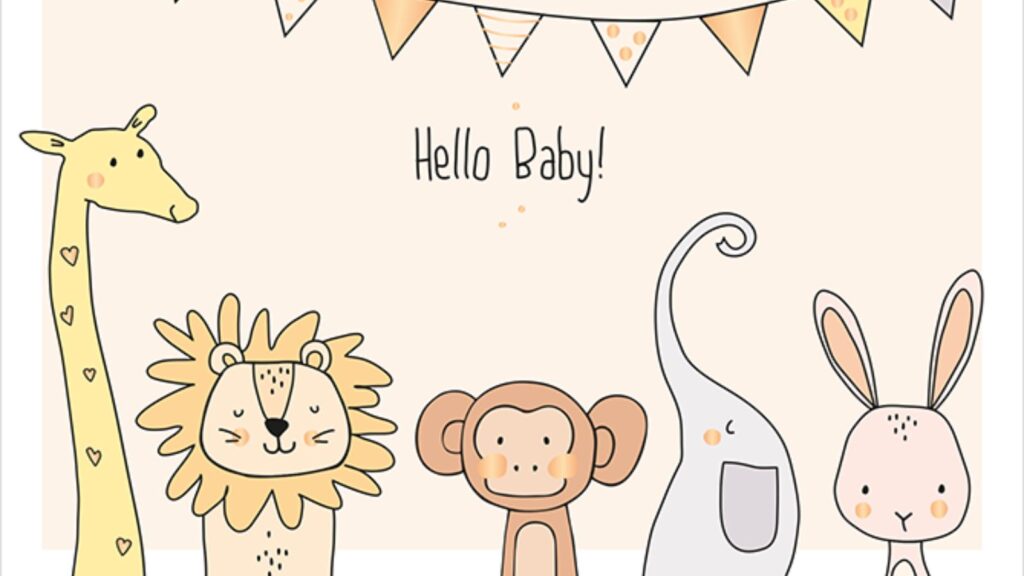
In the realm of digital artistry, the demand for culturally significant and aesthetically pleasing design elements is ever-growing. One such element that’s been capturing the attention of designers worldwide is the background Aqiqah vector. Aqiqah, a traditional Islamic ceremony celebrated on the birth of a child, has a rich visual culture that’s been inspiring design enthusiasts and professionals alike.

With its intricate patterns and symbolic motifs, the Aqiqah vector serves as a unique backdrop that can enhance any design project. It’s not just about the aesthetics, but also about the cultural significance that these vectors bring to the table. This article will delve into the fascinating world of background Aqiqah vectors, exploring their importance, usage, and the impact they’re making in the digital design landscape.
Background Aqiqah Vectors
The background Aqiqah vector, steeped in tradition while embodying deep spiritual significance, is a noteworthy element in the digital design landscape.
The Tradition of Aqiqah in Islam

Rooted in Islamic tradition, Aqiqah is a ceremonial practice performed seven days after a newborn’s arrival. It involves the act of animal sacrifice, its distribution to the needy, the naming of the child and head-shaving. These illustrated elements create the visual components of a background Aqiqah vector. Designers often utilize the intricacies of the Islamic patterns and motifs, showing the entire practice representationally in a vector format.
Spiritual Significance of Aqiqah

The spiritual significance of Aqiqah transcends beyond being a ritual. It further symbolizes the gratefulness of parents towards the divine for gracing them with a child. It also emphasizes charity, cleanliness, and introducing the child to the community. Background Aqiqah vectors often capture this thematic richness to portray this spiritual side. By employing symbolic imagery such as the lamb, the baby, and traditional Islamic aesthetics in the vector, designers encapsulate this profound significance visually. Therefore, the usage of the background Aqiqah vector embeds this sense of spirituality in the digital art, adding to its cultural value in the process.
The Role of Visual Representation in Religious Customs
Visual representations play a pivotal role in religious customs, offering a vivid, compelling narrative that adds a deeper layer of meaning to rituals and ceremonies.
Impact of Visual Aids in Religion

Religious teachings rely heavily on visual aids, enhancing worshippers’ understanding and facilitating active engagement. Pictures, symbols, and illustrations can articulate complex doctrines, translating them into engaging, digestible content.
For instance, in Christianity, the crucifix serves as a reminder of Jesus’ sacrifice. Similarly, in Buddhism, the wheel of Dharma symbolizes the Buddhist Eightfold Path. Visual symbols, by vividly encapsulating core beliefs, foster a deeper understanding of the religion, allowing worshippers to connect more intimately with their faith.
Understanding the Need for Background Aqiqah Vector
In the context of Islamic traditions, visual symbolism holds a significant place, especially in the Aqiqah ceremony, which brings us to the concept of the background Aqiqah vector.

This design element serves a dual purpose. It not only enhances the aesthetic value of digital art but also signifies the symbolic aspects of the Aqiqah ceremony. The use of culturally significant symbols of lambs and babies, along with traditional Islamic aesthetics, makes the background Aqiqah vector a potent component in communicating the profound spiritual and cultural values of this ceremony.
By merging art and spiritual significance, the background Aqiqah vector offers visual appeal and a sense of deep cultural reverence. Its increasing popularity among designers attests to the power of visual representation, securing its place as an integral part of articulating religious customs in the digital world.
Unveiling the Concept of Background Aqiqah Vector

A ‘background Aqiqah vector’ refers to a certain type of digital graphic used predominantly in Islamic rituals, particularly the Aqiqah ceremony. This intricate art form incorporates traditional Islamic symbols, geometric patterns, Arabic Calligraphy, and culturally significant elements that uphold the essence of the Aqiqah ceremony. Rendered as infinitely scalable vectors, these graphics are free from pixel constraints, offering clear, crisp edges irrespective of their size or resolution. Contrasting against the background, they help define the space, add depth, and articulate the ceremony’s message, culture, and significance.
The Aesthetics and Symbolism of Background Aqiqah Vector
Aesthetically, the background Aqiqah vector embodies the rich artistic heritage of Islamic culture. It showcases geometric patterns that adhere to Islamic doctrines forbidding the depiction of sentient beings. Balanced compositions, intricate detailing, and an affinity for motif repetition render these vectors visually appealing, blending elegance with spiritual significance.

On the symbolic level, the background Aqiqah vector is charged with profound cultural values. For instance, the use of Arabic Calligraphy often features Quranic verses, tying the visual medium back to religious teachings. This link weaves a layer of reverence and divinity into the design, enhancing its importance in digital representations of the Aqiqah ceremony.
Harnessing the power of symbolism and aesthetic appeal, the background Aqiqah vector thus stands as a bridge connecting digital art with Islamic traditions.
How to Use Background Aqiqah Vectors Effectively
Having recognized the role of background Aqiqah vector in enriching visual representations and maintaining spiritual and cultural connectivity, it’s crucial to utilize them effectively. This section explores how to apply these digital graphics optimally in the context of Islamic celebrations.
Selecting the Right Background Aqiqah Vector
Choosing the right Aqiqah vector forms the stepping stone for achieving impressive results. Factors influencing selection include cultural relevance, aesthetic appeal, and symbolic significance.

Cultural relevance: Opt for Aqiqah vectors that incorporate traditional Islamic motifs, geometric patterns, and Arabic calligraphy. These figures ensure the artwork resonates with Islamic traditions.
Aesthetic appeal: A proportional balance between form and content enhances the visual impact. Therefore, choosing vectors with balanced compositions and intricate details shapes the artwork’s aesthetics.
Symbolic significance: Vectors embedding Quranic verses or culturally significant symbols augment the spiritual echo of the celebration. Taking symbolism into account while selecting the Aqiqah background vector matters to keep the connection between art and spirituality intact.
Enhancing Your Aqiqah Celebrations with Vectors
The way one integrates a background Aqiqah vector into digital projects dictates how effectively it amplifies the spiritual essence and cultural value of the occasion. Three suggested strategies to leverage these vectors are:

Blend with design: Background Aqiqah vectors should blend with the overall design layout, maintaining a visual harmony that doesn’t overshadow the main content.
Stay cohesive: Consistency across all visual elements ensures the Aqiqah celebration feels unified. The chosen vector should align with other design elements, assuring a coherent and visually pleasing representation.
Provide context: Aqiqah vectors should provide context to the celebration, accentuating its Islamic roots. Incorporating Quranic verses or Islamic symbols into the vector bolsters the spiritual weightage and enriches the viewer’s connection with the event.

Overall, the effective deployment of background Aqiqah vectors empowers the bridge between digital art and Islamic traditions, facilitating a seamless fusion of artistic appeal and spiritual reverence.
Navigating through the vast digital realm, we find several sources offering background Aqiqah vectors. Expert illustrators and graphic designers across a plethora of platforms create these vectors, capturing the essence of Islamic traditions and the spiritual depth of Aqiqah ceremonies. These tools enable users to integrate cultural values into digital projects effortlessly.
Best Online Platforms Offering Aqiqah Vectors

Platforms such as Adobe Stock, Shutterstock, and Vecteezy rank among the top sources for background Aqiqah vectors. They offer an extensive range of Islamic vector art, this includes high-quality Aqiqah vectors crafted by expert designers. Adobe Stock, for instance, presents more than 60 million creative assets, making it a substantial hub for artists. Shutterstock features more than 25,000 Aqiqah vectors while Vecteezy provides user-friendly vector editing tools in addition to its vast selection.
Criteria to Judge Quality of Aqiqah Vectors

Quality matters when selecting background Aqiqah vectors. There are three primary criteria to consider: resolution, authenticity, and cultural relevance. High-resolution vectors ensure clear, crisp images, irrespective of scale. Authenticity relates to the vector’s replication of Islamic design elements. Furthermore, the vector’s cultural relevance signifies its alignment with Islamic values.
Tips to Customize Aqiqah Vectors

Customizing Aqiqah vectors lends a personal touch to digital design projects. Making careful selections from the color palette maintains alignment with Islamic aesthetics. Editing vector proportions according to design requirements ensures seamless integration. Adding symbolic elements, such as moon and stars, strengthens the Islamic significance. Thus, tastefully customizing Aqiqah vectors enhances the spiritual resonance and visual appeal of digital designs.
Must Know

Background Aqiqah vectors play a pivotal role in digital artistry within Islamic traditions. They’re not just about aesthetics – they also convey deep cultural values and doctrines. Top sources like Adobe Stock, Shutterstock, and Vecteezy offer high-quality vectors that align with these values. When selecting, it’s important to consider resolution, authenticity, and cultural relevance. Customization of these vectors, using appropriate color palettes and symbolic elements, can amplify their impact. By leveraging these vectors, one can seamlessly integrate Islamic values into digital projects, enhancing both their visual appeal and spiritual essence. So, whether it’s for a personal project or a community celebration, these vectors are a valuable resource to add depth and meaning to your work.


